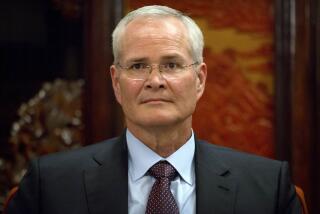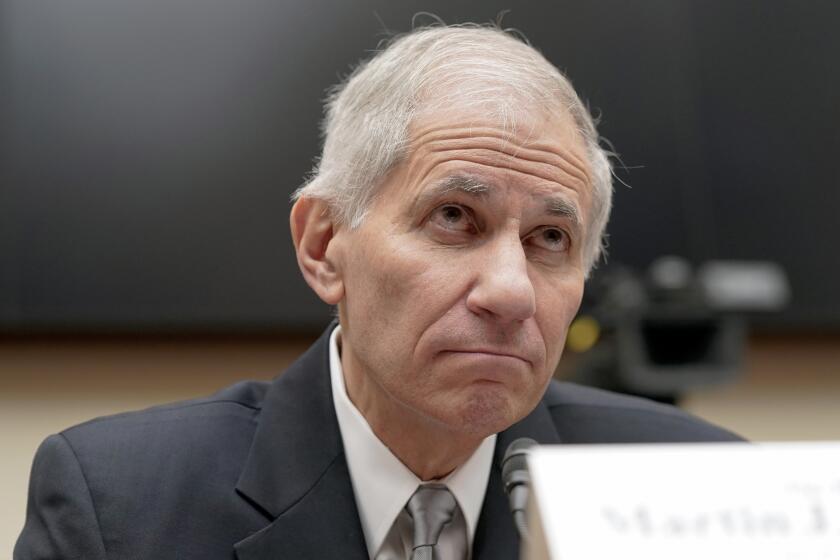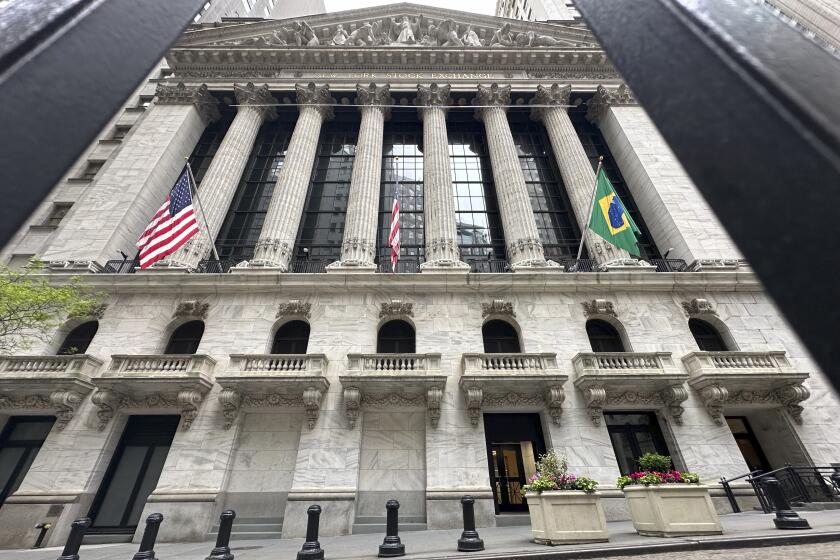Dynegy’s Chief Focusing on Assets
Two weeks into his new job as Dynegy Inc.’s chief executive, Bruce Williamson is focusing on assets as the key to restoring the troubled energy merchant -- which to keep, which to sell and what combination offers the best route toward ensuring the company’s future.
“What Dynegy can become is an asset-based business,” Williamson, 43, said in an interview with the Associated Press.
“We need to generate cash, which we continue to do. We need to sell off the noncore assets. Then we need to pay down debt. When we pay down debt, we get to a sustainable capital structure. And then this business just takes off and goes on forward,” he said Friday.
But Dynegy faces enormous hurdles, with many analysts questioning its prospects for survival.
The company’s stock has hovered below $1 for weeks, and last week its largest shareholder, ChevronTexaco Corp., said it would write off most of its Dynegy investment. On Friday, shares fell 3 cents to 79 cents on the New York Stock Exchange.
The firm has about $1.3 billion in debt due next year, and is looking for ways to renegotiate.
A year ago, Houston-based Dynegy stepped up to buy Enron Corp., its larger, failing rival. But Dynegy walked away from the $8-billion deal and Enron filed for bankruptcy amid a wave of accounting scandals that have tainted the industry. Since then, Dynegy and other energy merchants have faced fleeing investors, credit downgrades and increased regulatory scrutiny.
This year Dynegy forced out top managers, fired traders and announced plans to lay off hundreds of workers as it abandoned the energy-trading business.
On Friday, El Paso Corp. became the third energy merchant this year, behind Dynegy and Kansas City-based Aquila Inc., to announce plans to abandon trading. Enron gave its trading business to UBS Warburg in January in exchange for a third of future profits.
Instead of trading, Dynegy will focus on its traditional energy businesses, which include coal and natural gas-fired power plants, and Illinois Power, which has about 650,000 gas and electricity customers.
“It’s an industrial business model, and that’s our business model,” Williamson said. “What ultimately matters is, did you produce and sell energy and deliver energy in a low-cost manner, and how did you manage your business?”
Williamson said the utilities, coupled with sound cash management and asset sales, will enable Dynegy to ride out the weak economy. Among the properties Dynegy has been shopping around is Rough, a provider of natural gas storage in Britain and used by about half of U.S. natural gas shippers. Dynegy paid $590 million for the storage business last year.
Williamson, a Montana native, was assistant treasurer at Houston-based Shell Oil Co. from 1981 to 1995. He was vice president of finance at PanEnergy Corp. in 1997 when that company merged with Duke Energy Corp. Williamson left his job as president and CEO of Duke’s global markets division last month to take Dynegy’s helm.
A week later, Dynegy announced a $1.8-billion third-quarter loss fueled by low power prices and a flurry of one-time charges, including costs related to its departure from the marketing and trading business.
Jim Hackett, chairman and chief executive of Ocean Energy in Houston, worked with Williamson at PanEnergy and Duke. He called Williamson “very deliberate, very paced, very tough-minded and very fair.”
“He has an ability to strategize very well, and an ability to look at how that strategy can be translated into action,” Hackett said.
Mark Easterbrook, an analyst with Dain Rauscher Wessels, said Williamson could find banks unwilling to renegotiate agreements if the economy remains weak, despite Dynegy’s decision to abandon trading.
“You have this highly leveraged company that needs to pay down debt,” Easterbrook said. “For banks to be willing to re-lend their money again -- they may have a tough time convincing banks to do that.”






